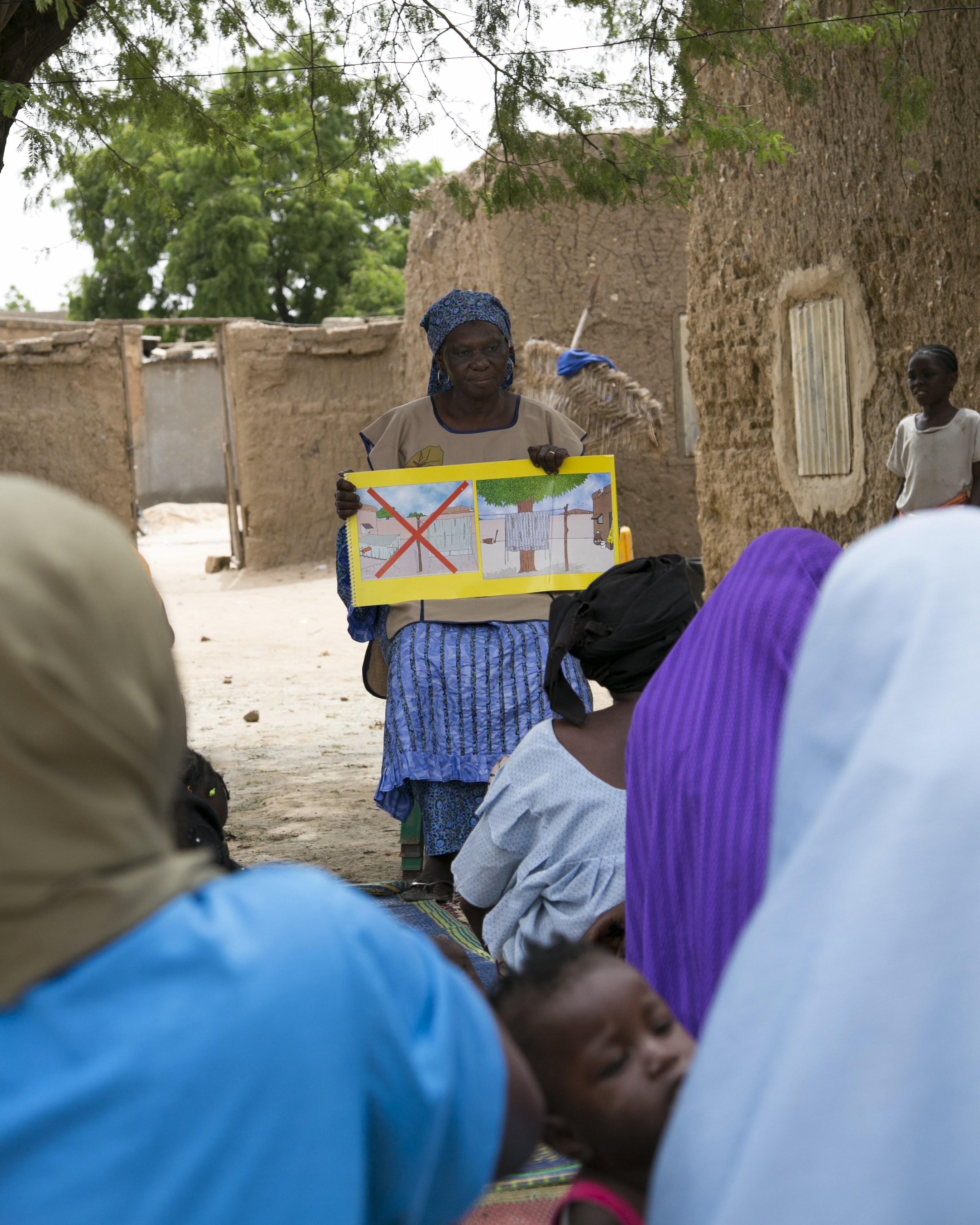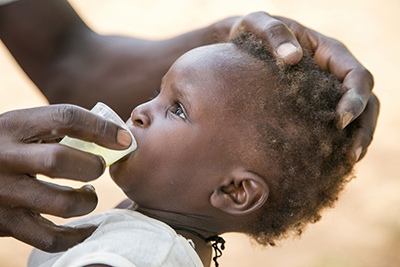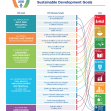

Protecting Niger From Malaria
“Males sing in your ear, but females drink your blood.” —Seydou Fati
Seydou Fati is a community health worker who knows a lot about mosquitoes. She knows what they sound like, what they look like and when they like to strike.
She also knows that each year, thousands of people die from malaria—a disease spread by a mosquito’s bite—and that young children in Africa are the most affected.
But these deaths don’t have to happen. Malaria is preventable, and it’s her job to teach people how to protect themselves.
Growing a network of prevention

Seydou’s work is part of an ambitious project led by Catholic Relief Services in Niger: Ensuring that about 21 million people sleep under long-lasting, insecticide-treated mosquito nets.
“Malaria has a devastating effect on communities across Africa,” says William Rastetter, former CRS country representative in Niger. “By edging closer to universal coverage in Niger, we can eliminate malaria—and the needless deaths that have occurred because of the disease.”
Since 2009, in collaboration with Niger’s Ministry of Health and our local partners, CRS has supported the distribution of 18.8 million nets nationwide.
Since 2 people are expected to sleep under each net, more than 21 million people in all regions of Niger have had the opportunity to be protected from malaria-carrying mosquitoes during the insect’s most active hours—from dusk to dawn.
In addition to preventing malaria, the nets save families money and worry.
“If I take my child to the doctor, I need to bring money,” says Seydou. “But if you put the child under a net, then you don’t need to spend that money on medicine.”
Seydou teaches families to go under their mosquito nets as soon as night comes, and to bring their child to the nearest health facility at the onset of fever to test them for malaria, and receive treatment medication in the event that the test result is positive indicating that a child had malaria.
And community members are seeing results.
“In Niger, people are very poor. At times, my children got malaria. I would go to the local health clinic, but they would turn me away,” says Haoulé Abdou, a mother of six. “They’ve gone 1 year without malaria. The most important lesson is to sleep each night under a net.”
Targeting the most vulnerable
Seasonal malaria chemoprevention (SMC) is an approach recommended by the World Health Organization since 2012. It involves the regular administration of antimalarial medication during the rainy season to children between 3 months and 59 months, the age group most at risk for severe illness and death.
In 2014, CRS started supporting The Gambia with the introduction of SMC, which now has the goal of “no new cases of malaria” in its national malaria strategy. Since then, CRS has been supporting five countries (Cameroon, Guinea, Mali, Niger, and The Gambia) in the scale-up of SMC. Some highlights include:

A child receives medication to prevent the transmission of malaria. Photo by Michael Stulman/CRS
- Between 2015 and 2018, CRS supported national malaria control programs in Cameroon, The Gambia, Guinea, Mali and Niger with a full course of life-saving drugs to nearly 16 million children under five years old.
- In 2017, CRS supported ministries of health to provide over 15 million SMC drugs to 3.7 million children, averting an estimated 2.5 million cases of malaria and saving the lives of approximately 18,500 children
- In Cameroon, CRS worked across 45 health districts in the Northern Region, reaching over 1.5 million children with SMC medicines, in over 750,000 households.
- Based on the 2016 data analysis from the national health information systems, the SMC program contributed to a decrease in the number of children affected with malaria from 31% in Guinea, 39% in Mali, to 57% in The Gambia.
- The results show that SMC is highly effective in reducing malaria and saving lives. If these results could be further improved and achieved at-scale for eligible children, it could transform their lives by avoiding infection, reduce the demand for treatments at community and facility level, improve school attendance, and decrease government expenditure on malaria, making those funds available for productive reinvestment elsewhere. This is possible at an estimated SMC cost of only $4 per child per year.
“Before these projects, malaria was very common. Sometimes people were dying,” says Haoulé. “I believe in SMC.”




